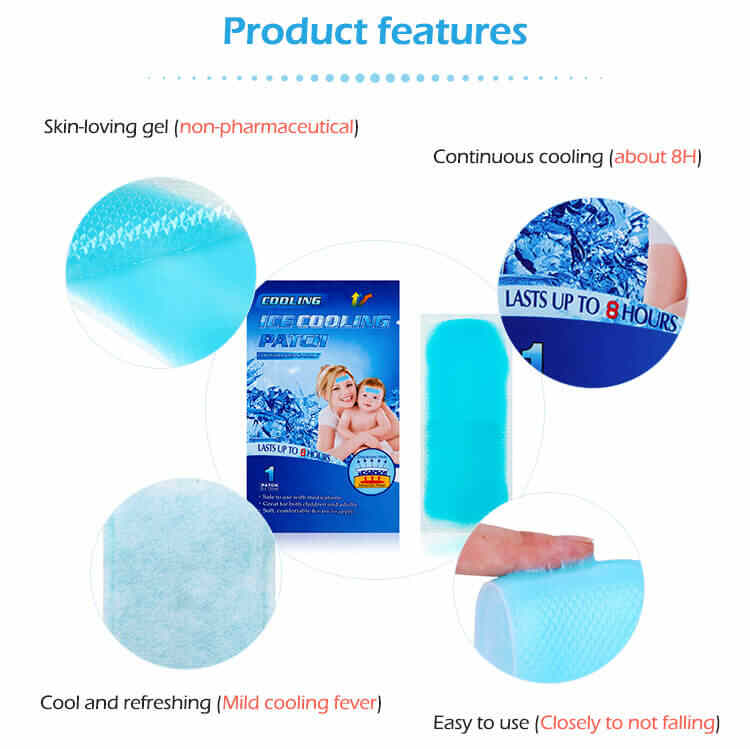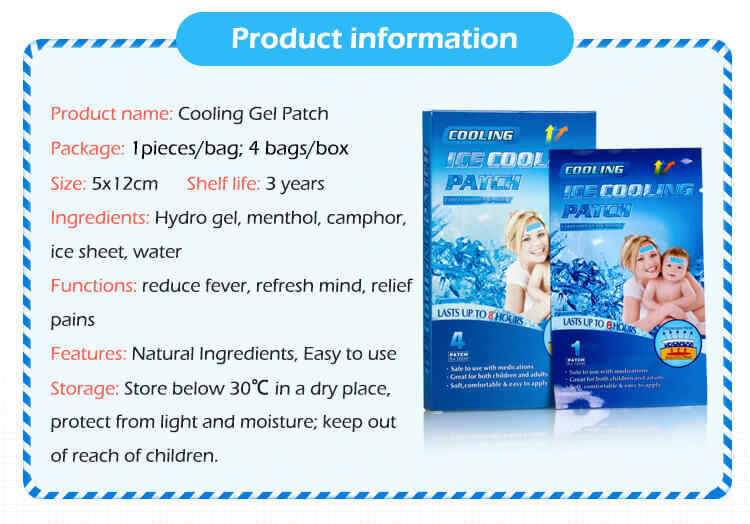How Can I Verify My Hydrogel Cooling Patches Supplier’s Sustainability Claims?
A Comprehensive Guide for Brands, OEMs, and Private Label Partners
Sustainability has become a critical factor in the wellness product industry, and hydrogel cooling patches are no exception. As eco-conscious consumers increasingly prioritize environmentally friendly products, brands are exploring Custom hydrogel cooling patches and Private Label hydrogel cooling patches that align with sustainable practices.
However, not all suppliers’ sustainability claims are equally reliable. Partnering with a hydrogel cooling patches Manufacturer or Supplier without proper verification can result in misleading marketing, regulatory risk, or even reputational damage. This guide explains how to rigorously verify your hydrogel cooling patches supplier’s sustainability claims to ensure authenticity, performance, and compliance.

1. Why Supplier Sustainability Verification Matters
Sustainability verification is essential for several reasons:
Consumer trust: Today’s consumers expect transparent, eco-friendly practices. False claims can severely damage brand reputation.
Regulatory compliance: Eco-labeling and environmental claims are subject to strict regulations in many countries.
Quality assurance: Sustainable practices often reflect higher standards in raw material sourcing, production efficiency, and waste management.
Market positioning: Verified sustainability can differentiate Private Label hydrogel cooling patches in a crowded marketplace.
By confirming a supplier’s sustainability practices, you reduce risk while enhancing your brand’s credibility.
2. Key Sustainability Aspects for Hydrogel Cooling Patches
To verify claims, first understand what makes a hydrogel cooling patch sustainable:
A. Material Sustainability
Plant-based or biodegradable polymers instead of petroleum-based gels.
Non-toxic adhesives for safe disposal and reduced environmental impact.
Recyclable or biodegradable packaging such as FSC-certified paper pouches.
B. Manufacturing Sustainability
Energy-efficient production methods.
Waste reduction initiatives and responsible disposal of by-products.
Water conservation practices during hydrogel formulation.
C. Regulatory and Certification Compliance
Certifications such as ISO 14001 (environmental management), FSC, EcoLabel, Cradle to Cradle, or USDA BioPreferred.
Alignment with local environmental regulations in target markets.
A credible hydrogel cooling patches OEM partner should integrate these elements into every batch of Custom hydrogel cooling patches.
3. Step-by-Step Process to Verify Sustainability Claims
Step 1: Request Detailed Documentation
Ask your hydrogel cooling patches Supplier for:
Material sourcing certificates and MSDS (Material Safety Data Sheets).
Eco-certifications (ISO 14001, EcoLabel, FSC, USDA BioPreferred).
Production process audits or sustainability reports.
Authentic suppliers provide this documentation proactively.
Step 2: Verify Certifications with Issuing Bodies
Check certification validity directly with the issuing authority:
ISO 14001 certificates can be verified with accredited registrars.
EcoLabel claims should be confirmed through the EU database.
FSC and USDA BioPreferred certificates are publicly verifiable online.
Step 3: Evaluate Manufacturing Practices
Conduct a factory visit or virtual inspection to assess:
Waste management and recycling systems.
Energy and water usage monitoring.
Segregation of biodegradable vs. non-biodegradable materials.
A responsible hydrogel cooling patches Manufacturer often welcomes such audits.
Step 4: Analyze Material Composition
Request independent lab tests to verify:
Biodegradability or compostability of the hydrogel matrix.
Non-toxic adhesive content.
Absence of harmful chemicals or heavy metals.
These tests ensure your Private Label hydrogel cooling patches meet both sustainability and safety standards.
Step 5: Examine Packaging Sustainability
Eco-friendly packaging should be:
Recyclable or compostable.
Free from excess plastics and harmful inks.
Clearly labeled for consumer disposal instructions.
A hydrogel cooling patches OEM experienced in private labeling will guide packaging choices for compliance and sustainability.
Step 6: Confirm Supply Chain Transparency
Sustainability is only credible if traceable across the supply chain:
Source verification for plant-based or biodegradable materials.
Supplier audit reports for secondary vendors.
Consistency in eco-friendly claims across all batches.
4. Red Flags That Suggest Unsustainable Practices
When evaluating suppliers, watch out for:
Lack of official certificates or delayed documentation.
Ambiguous terms like “eco-friendly” or “green” without proof.
Inconsistent information across product batches.
Suppliers unwilling to allow audits or third-party inspections.
Avoiding these risks ensures your Custom hydrogel cooling patches line maintains credibility.
5. The Role of a Responsible Hydrogel Cooling Patches OEM
A professional hydrogel cooling patches OEM can simplify sustainability verification:
Pre-screening of raw materials for eco-friendliness.
Comprehensive documentation for certifications.
Guidance on regulatory and market requirements.
Audit-ready facilities and batch traceability.
Partnering with the right hydrogel cooling patches Supplier is critical to ensuring that your Private Label hydrogel cooling patches are both eco-compliant and high-performing.
6. Case Study: Sustainability Verification in Action
A European wellness brand wanted to launch Private Label hydrogel cooling patches marketed as eco-friendly. Their supplier provided:
ISO 14001 certification for environmental management.
FSC-certified biodegradable packaging.
Detailed energy usage and waste reduction reports.
Verification steps included:
Cross-checking ISO and FSC certificates with issuing bodies.
Independent lab tests on hydrogel biodegradability.
Virtual factory audit to confirm production efficiency and waste management.
Outcome:
Full validation of sustainability claims.
Positive marketing leverage for eco-conscious consumers.
Zero regulatory or compliance issues at launch.
7. Benefits of Verified Sustainability for Private Label Brands
Consumer Confidence: Verified claims increase trust in Custom hydrogel cooling patches.
Market Differentiation: Eco-certified Private Label hydrogel cooling patches stand out in crowded wellness markets.
Regulatory Compliance: Documentation and third-party verification reduce legal risks.
Long-Term Partnerships: Reliable suppliers enable sustainable growth for brands.
8. Integrating Sustainability Verification Into Your Procurement Process
To make sustainability a consistent part of your sourcing strategy:
Include sustainability criteria in your RFP (Request for Proposal) for hydrogel cooling patches OEM partners.
Require detailed documentation and third-party verification before contracting.
Schedule regular supplier audits and follow-ups.
Maintain transparent records for marketing and regulatory purposes.
This ensures your hydrogel cooling patches Manufacturer or Supplier remains accountable.
9. Conclusion
Verifying a hydrogel cooling patches Supplier’s sustainability claims is essential for credible branding, regulatory compliance, and long-term success. By requesting documentation, auditing manufacturing practices, and testing materials, brands can confidently launch Custom hydrogel cooling patches and Private Label hydrogel cooling patches that are both eco-friendly and high-performing.
Working with an experienced hydrogel cooling patches OEM or Manufacturer ensures transparency, consistent quality, and verified environmental responsibility—creating products that meet the expectations of modern eco-conscious consumers.
Related Questions & Short Answers
Q1: How do I verify a hydrogel cooling patches Supplier’s eco-certifications?
A: Cross-check certificates with the issuing bodies (ISO, FSC, EcoLabel, USDA BioPreferred) and request audit reports.
Q2: Are sustainability claims automatically valid for Private Label hydrogel cooling patches?
A: No. Verification through documentation, third-party testing, and supplier audits is necessary.
Q3: Can eco-friendly materials affect patch performance?
A: When developed by a skilled hydrogel cooling patches OEM, eco-friendly materials can perform as effectively as traditional ones.
Q4: Should I audit my supplier’s manufacturing facility?
A: Yes, on-site or virtual audits help confirm sustainable practices and process integrity.
Q5: How often should sustainability verification be conducted?
A: Periodically, ideally annually or whenever there are material, process, or supplier changes.






